xiamen ZONEWU This LoRa wireless Nitrogen Dioxide (NO2) sensor is a device that can transmit data online and collect environmental information without wiring. It is equipped with probes for measuring nitrogen dioxide and components for measuring temperature and humidity, which can monitor the nitrogen dioxide content in the air, as well as temperature and humidity data at any time. This device uses good nitrogen sensing components and small chips, and the measured values are reliable. It is not prone to problems and does not consume electricity. Moreover, it can use the standard LoRaWAN wireless protocol to transmit data to remote locations.
Modelo de producto :
LW315-NO2Modo de suministro de energía :
Battery or External DCFrecuencia :
CN470/IN865/EU868/RU864/US915/AU915/ KR920/AS923-1&2&3&4Versión MAC :
LoRaWAN 1.0.3Modo :
OTAA Class A/CPeso :
120gEnvironmental LoRaWAN Nitrogen Dioxide (NO2) Sensor
xiamen ZONEWU The LoRa NO2 (Nitrogen Dioxide) sensor is a wireless networked device specifically designed to monitor nitrogen dioxide gas in the air.
xiamen ZoneWu LoRaWAN Gas Sensor NO2 Sensor Features:
This is a sensing device that can be connected to the internet without a connection. It can collect data on nitrogen dioxide content, temperature, and humidity in the environment, monitor and send information at the same time, allowing us to understand these situations at any time.
It contains a component for measuring nitrogen dioxide, a sensor for measuring temperature and humidity, a useful nitrogen dioxide detection device, and a small chip. With these things, it can accurately measure the amount of nitrogen dioxide, temperature, and humidity in the environment.
The measured data is particularly accurate and rarely contains errors. It is very stable to use and not easily affected by external environments. And it doesn't consume much electricity, saving money when used, without worrying about constantly charging or changing batteries.
It uses LoRa signal enhancement technology and also supports the universal LoRa wireless protocol. It's like holding a phone with a particularly good signal, which allows devices to exchange messages with each other and send monitored data to distant places.
You can set a reference value in advance based on the environmental conditions. If the monitored data is higher or lower than this value, it will immediately notify us that the data is abnormal, so that we can handle it in a timely manner.
It has many uses! The air quality monitoring station uses it to check if the air is polluted; The place where the factory emits exhaust gas can be used to check whether the nitrogen dioxide in the exhaust gas exceeds the standard; It can also be used to measure whether the air quality in the room is good or not; Even around transportation hubs with many people and vehicles, it can be used to monitor air quality.
Technical Parameters
| Power Supply | 5~28VDC |
| Weight | 120g |
| Operating Temperature | -20℃~60℃ |
| measuring Principle | Electrochemistry |
| Lifespan | <2 years |
| Measuring Range |
NO2:(0-20)ppm Temp:-40~+80℃ Humi:0~99.9%RH |
| Frequency |
CN470/IN865/EU868/RU864/US915/AU915/ KR920/AS923-1&2&3&4 |
| Mode | OTAA Class A/C (Default: Class C) |
| Reporting cycle |
External power supply:5min (Default reporting cycle) Report after preheating for 3 minutes when powered on |
| Communication Protocol | LoRaWAN, LoRa TDMA Networking |
|
Equipment information (Reference) |
AppEUI:0000000000000001 DevEUI:aaaa202404150001 AppKey:00001111222233334444555566667777 MAC Version: LoRaWAN 1.0.3 |
Product Applications
1. Far transmission: With LoRa technology, data can be sent several kilometers away without a connection, making it particularly suitable for monitoring nitrogen dioxide levels on a large scale.
2. Accurate measurement: Highly sensitive to nitrogen dioxide, with fast and accurate concentration measurement, reliable data can be obtained at any time.
3. Not afraid of interference: Whether it's wire interference or environmental impact, it can work normally in messy places.
4. Easy installation: Small in size and not occupying much space, easy to install, no need to pull a bunch of wires, install wherever you want.
Detailed Images
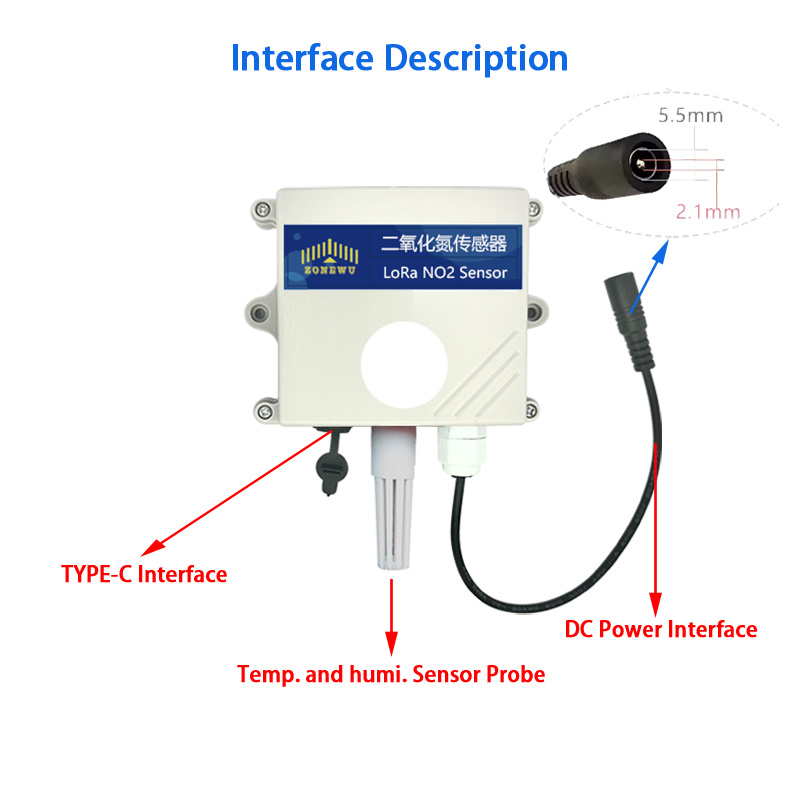
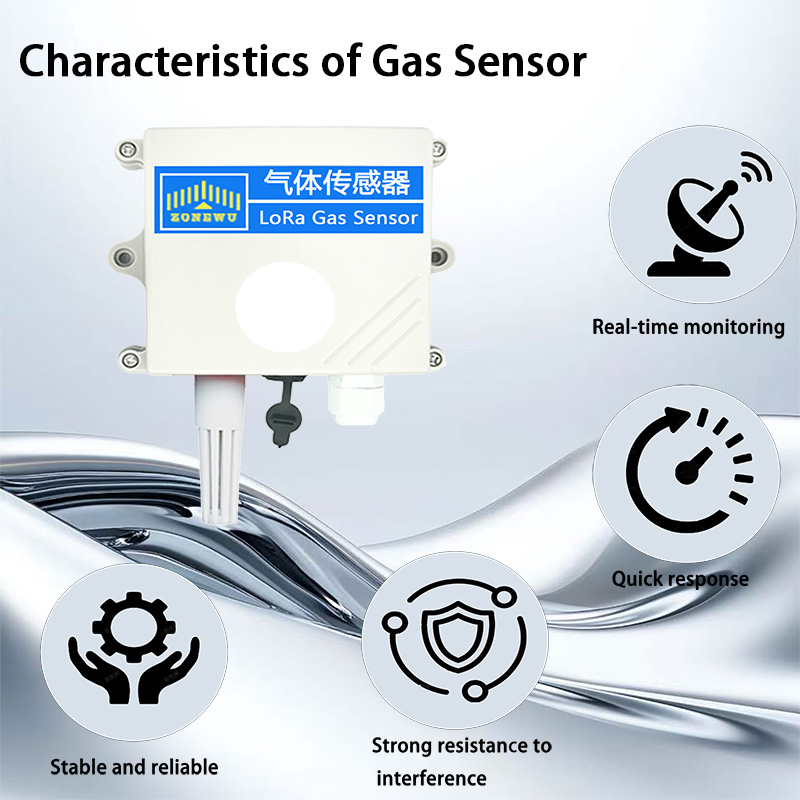
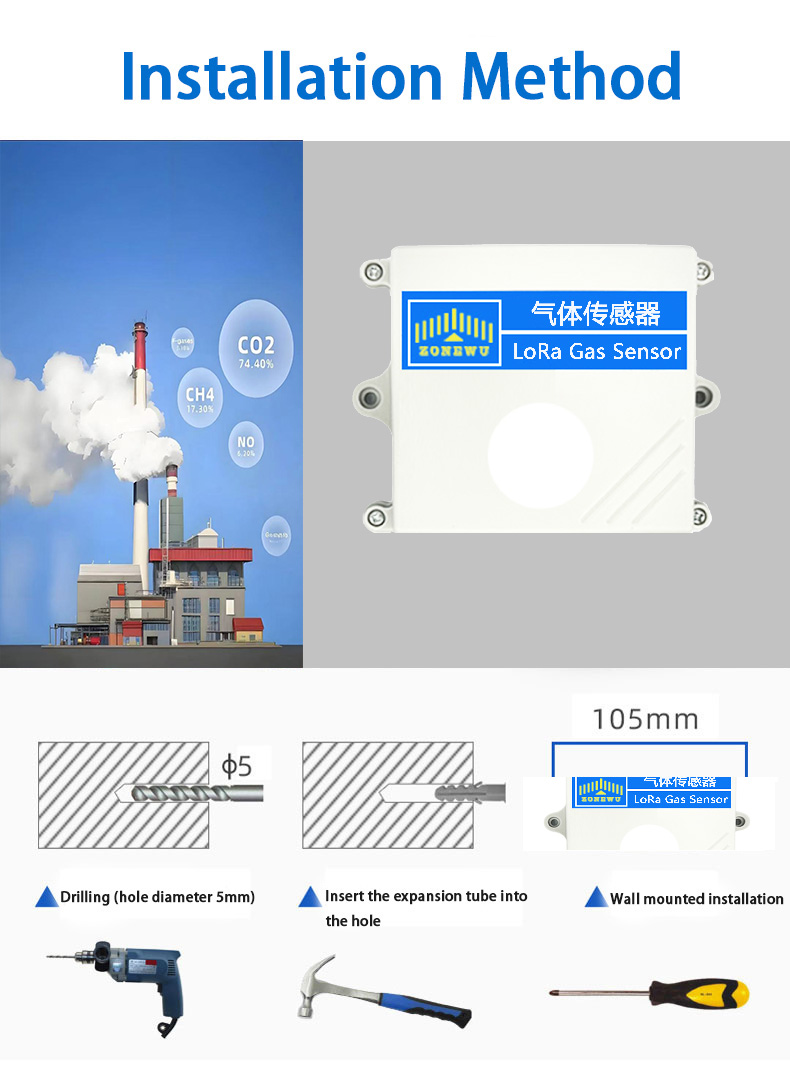
Common knowledge of NO2
What is a nitrogen dioxide sensor? What does it mainly measure
A nitrogen dioxide sensor is a device used to monitor the concentration of nitrogen dioxide gas in the air. Nitrogen dioxide is a common air pollutant, mainly from automobile exhaust, industrial emissions, etc. Sensors can measure its content in the air in real time, helping us determine whether the environment is polluted.
What is the typical measurement range of a nitrogen dioxide sensor
Generally speaking, the measurement range of civilian nitrogen dioxide sensors is commonly between 0-20 ppm (parts per million) or 0-500 μ g/m ³ (micrograms per cubic meter). For example, some household sensors can measure 0 to 20 ppm, which is sufficient to monitor normal indoor and outdoor pollution conditions; Industrial applications may have a larger range and can measure higher concentrations.
How to convert ppm and μ g/m ³ concentration units
When converting, it is necessary to know the molar mass of nitrogen dioxide (about 46 g/mol) and the molar volume of gas under standard conditions (about 22.4 L/mol). Simply put, the formula is:
μg/m³ = ppm × 46 ÷ 22.4
For example, converting 1 ppm of nitrogen dioxide to μ g/m ³ is: 1 × 46 ÷ 22.4 ≈ 2.05 μ g/m ³. Conversely, knowing μ g/m ³ can also be used to deduce ppm using this formula.
What is the safe concentration of nitrogen dioxide in the air? What if it exceeds
The World Health Organization recommends that the 24-hour average safe concentration of nitrogen dioxide in the air should not exceed 25 μ g/m ³. If the concentration exceeds the standard, such as reaching 50 μ g/m ³ indoors, it may irritate the respiratory tract and be harmful to lung health if exposed for a long time; When the outdoor concentration is high (such as in areas with heavy traffic), it may also exacerbate the problems of haze and acid rain.
Application Scenarios
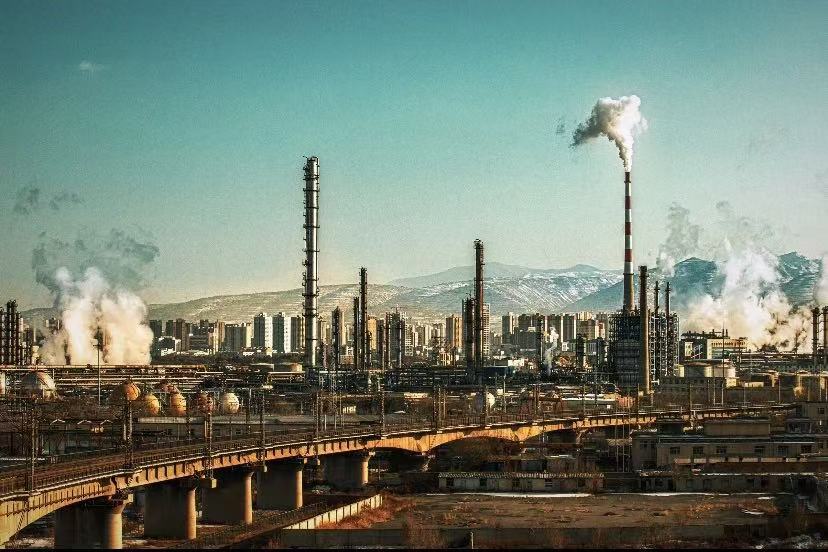
Industrial production
Waste gas emission monitoring: Conduct real-time monitoring of industrial waste gas emissions to ensure that waste gases meet emission standards and reduce pollution to the environment.

Environmental inspection
Air quality monitoring helps people understand air quality and protect the environment and health by detecting harmful gases such as sulfur dioxide.
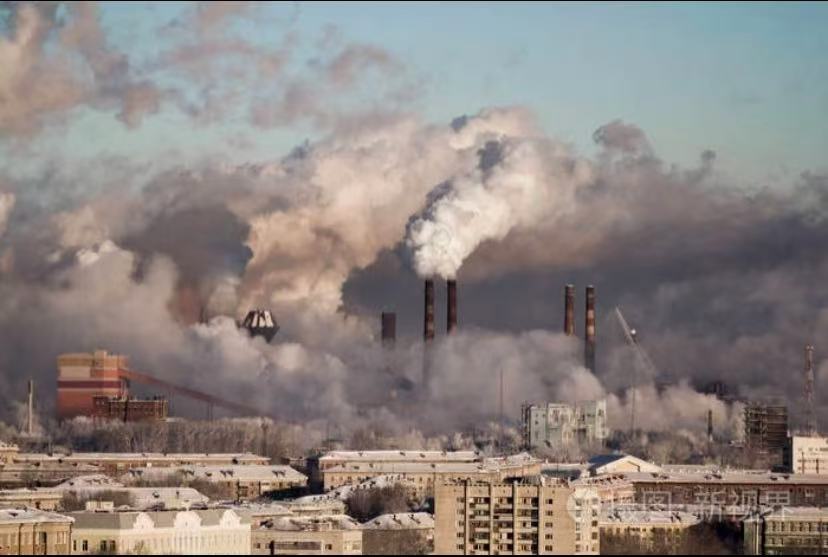
Safety protection
In coal mines and tunnels, gas sensors detect toxic and harmful gases such as methane and warn against accidents.
A:Yes,we can provide you with OEM services and design housings and logos.
3.DO you offer free samples?
A:Sorry,we don't offer free samples. After ordering in bulk, we will deduct the sample fee from the second order.
Why Choose ZONEWU